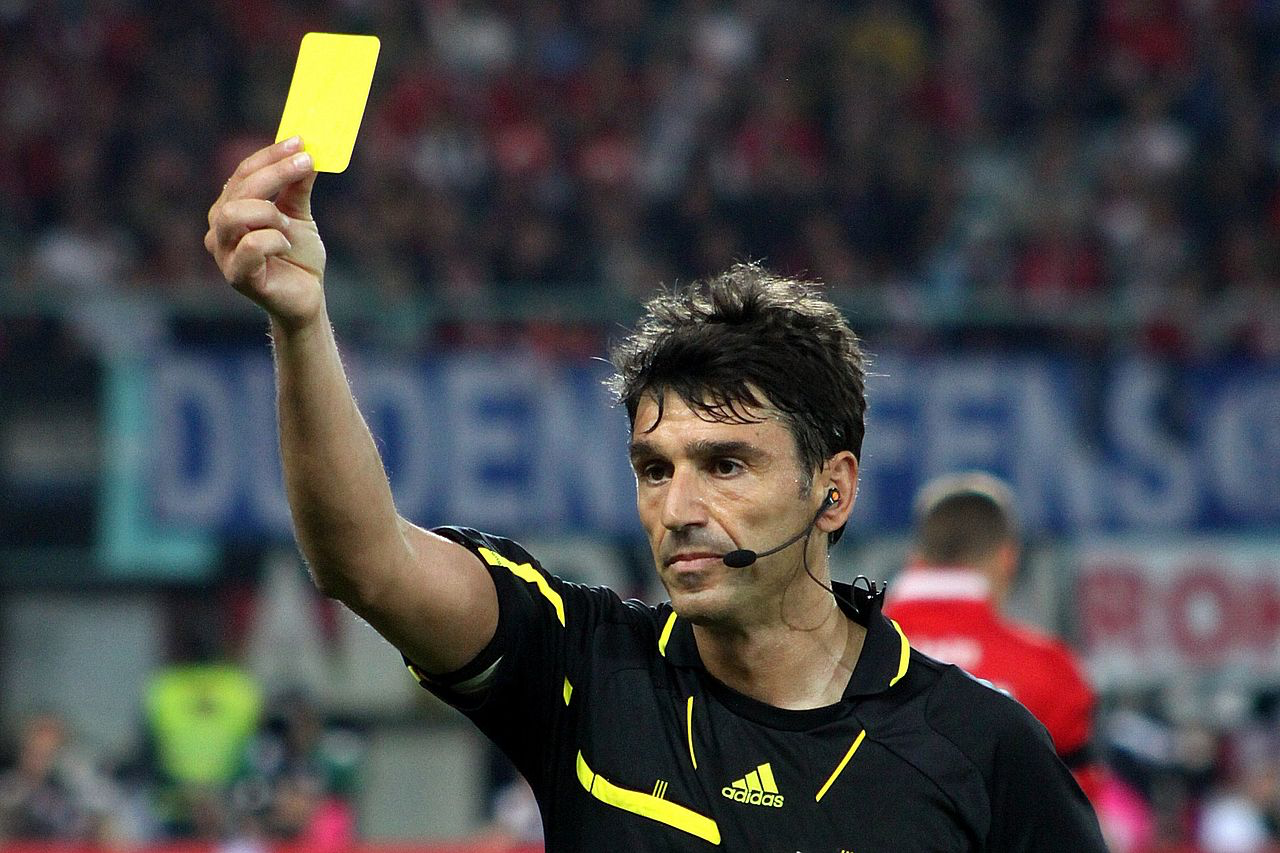
If there’s one thing everyone is talking about after the last few Rising games, it’s referees. From the late penalty against San Antonio to the red card for Mala in Edinburg, refereeing decisions are attracting outrage from the stands and on the internet. Every tweet from USL is greeted with some form of “get better refs!” So what is the problem, and how can it be fixed?
The referees that take the whistle in USL games are almost always Grade 3 ‘National Referees’. They are trained and selected by the US Soccer Federation (USSF) and not USL. They have spent many years getting to where they are now, having started out refereeing youth matches at Grade 8. The problem isn’t that the people being chosen to referee are the wrong ones: it is more one of development.

The primary issue for referee development in the US at the higher levels is simple: the league system is disjointed, and this causes issues in progression. In countries with a large pyramid system featuring promotion and relegation, referees can step up one league at a time, and the difference in difficulty is much more marginal – after all, the annual exchange of teams prevents them from drifting apart drastically in terms of quality. In the US, this simply isn’t the case. Below the USL there are two leagues of note: the PDL and the NPSL. Below these are adult amateur leagues, playing in public parks, and the highest levels of youth competition. There are many important things that referees will learn at these levels, but they simply do not prepare them adequately for the challenges that they will face handling former top-flight players in front of thousands of fans in Cincinnati or Sacramento. The result is that referees arrive at the USL level completely underprepared.
This is compounded further when you compare the number of referees to the number of available games. In the past four weeks, 64 USL games have been played in the US, and 45 different referees have taken the whistle over those games. Of those 45 referees, 29 have taken only a single game. This raises the question: where else are they refereeing?
There are some games in the NASL, at the same level as USL, but with only eight teams in the league, it barely offers any help. The PDL and NPSL offer more opportunities for refereeing, but with their seasons now finished, they won’t be relevant again until 2018. The NWSL is perhaps the only league left of comparable quality, yet it also has too few teams to make a significant difference. If they aren’t refereeing in any of these leagues, then there must be too many referees at this level, which prevents them from settling in.
So how can we fix this? One option is to cut the number of Grade 3 officials available to referee matches, so that a smaller group handles USL games more frequently. While this may help the development of refs, it’s unlikely to happen. USSF has already significantly reduced the number of National Refs in recent years, and there are other pressures within the organization not to cut them any further. The National badge is frequently used as an incentive by administrators to lure referees to out-of-state youth tournaments (often on their own dime) in the hope that they’ll be noticed by National Assessors. By taking away this carrot, or at least by moving it much further away, demotivated referees could stop playing along with this game, and administrators could find it harder to fill these spots.
There may be another answer: more officials could be encouraged to become specialist assistant referees instead. There has been some movement towards this, with USSF splitting ‘National Referees’ and ‘National Assistant Referees’ into separate grades. Doing this could maintain the same number of national-level officials, while increasing the number of games that they call. The only problem here is cost. Specialist assistants would need high-level games like the USL games. At the moment, many USL assistants are sub-national and are given games in their home state to save on travel expenses. We’ve had the same few assistants again and again at Rising home games this season. The introduction of more specialist assistants could see more of them travelling from out-of-state, increasing the cost for teams.
So how much does USL actually value better officiating? Fans are demanding better referees, but it’s not stopping them from attending games; and it doesn’t appear to be deterring sponsors either. Are clubs prepared to pay for better quality officials? A change of that magnitude will need league-wide support.
In short, solving the referee problem is not going to be an easy fix. Serious questions need to be asked in boardrooms at the highest level. Perhaps the plans for new Division 3 leagues will help to plug the gap in the future? Until then, Rising players and fans (and those of other USL sides) will have to ride out the storm, and hope that the calls even themselves out over the course of a season.
